EverQuest Next Landmark hands-on preview
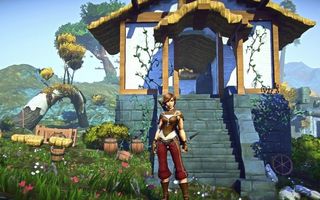
EverQuest Next Landmark is the creative building counterpart to EverQuest Next . Initially, players will adventure through untouched continents on massively multiplayer servers, stake land claims, and build whatever they want (unless it's copyrighted or a giant penis) with a powerful set of voxel tools. Later on, Landmark will include AI, combat, and DM tools, but its early 2014 launch starts with the basics. Last month, I visited Sony Online Entertainment's San Diego studio to try out a pre-alpha version of the toolset and see what I could build in a few hours.
Landmark gives us the power of scaleable blocks, copy and paste, undo, spheres, smoothing, selections, fill and delete functions, and more, but the blocks still need to be placed deliberately. The smoothing tool, for instance, won't efficiently mold large, hard edges into nicely beveled joints, or turn a giant floating block into a flying saucer. So it's a mix between Minecraft and 3D modeling, but with more of the former than the latter—simplicity and intuitiveness is prioritized over efficiency.
Still, large architectural frames can be built very quickly thanks to the selection tool. It can be tough to manipulate the 3D selection boxes while in the body of a Landmark character, but once a selection is lined up, it can be filled in with any material, creating walls and floors in a snap. Selections can also be used to delete or copy and paste pieces of land or buildings. What might take days in Minecraft can be done in seconds—I managed to build the frame of the Empire State Building in just a few minutes.
But as I was getting comfortable with the tools, I mostly built directionless modern art—giant metal spheres floating in a valley, a stone house that looks like it's melting, lots of holes in the ground. My first real project was meant to be a tavern for locals to booze in, but it wound up being a wooden box that looked like a child's unsupervised attempt a building a birdhouse. For very big birds, that is—my sense of scale was way off, so the door is big enough for dragons.
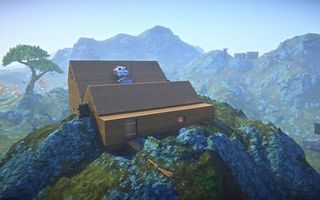
As you can see below, some of the developers at Sony Online Entertainment came in later to fix up the botched job, adding some beautiful details and repairing my pathetic attempt at a sloped roof.
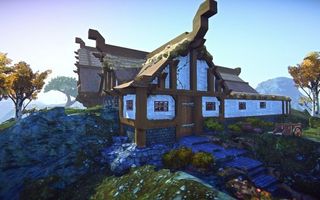
Landmark is probably best experienced after a few learning binges, with time to experiment, destroy, and rebuild until all the techniques are second nature. Then I might draft a blueprint, and carefully, over the course of many hours, start laying out blocks, smoothing, fixing mistakes, and erecting a structure I'm proud of. Instead, I spend a lot of time burrowing into mountains, dropping in props like lanterns and hay bales, then accessorizing with lava and round Indiana Jones-style boulders, because carving organic rock shapes is the easiest way to make something attractive with only a few minutes of work. It's fun, too—I look forward to digging out a non-infringing version of The Lord of the Rings' Shire.
Looking at what the developers have scattered around this test server, I see incredible potential to do that and much more. There's a gorgeous mountain-top castle, a looming battlemech, cozy medieval cottages—with thousands of players in a server, some working alone and others in guilds, the worlds of Landmark will blossom like a petri dish of creativity. Groups will build entire cities, and out in the boonies, little wonders will be tucked away in every forest and cave.
The biggest gaming news, reviews and hardware deals
Keep up to date with the most important stories and the best deals, as picked by the PC Gamer team.
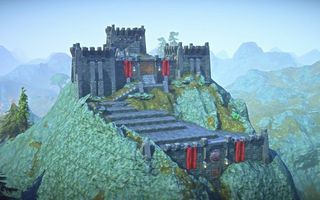
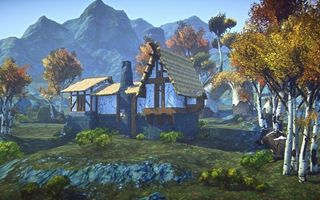
Landmark will be free to play early next year. And once the first wave of players has populated the servers with sci-fi slums, ancient ruins, elvish villages, or whatever it is they're inclined to build, SOE will be expanding the toolset with the same systems it's using to build EverQuest Next. My giant little tavern, then, might actually be populated with NPCs serving booze, my caves might be crawling with creatures from the netherworld, and great castles may actually be useful strongholds—especially in PvP areas.

Tyler grew up in Silicon Valley during the '80s and '90s, playing games like Zork and Arkanoid on early PCs. He was later captivated by Myst, SimCity, Civilization, Command & Conquer, all the shooters they call "boomer shooters" now, and PS1 classic Bushido Blade (that's right: he had Bleem!). Tyler joined PC Gamer in 2011, and today he's focused on the site's news coverage. His hobbies include amateur boxing and adding to his 1,200-plus hours in Rocket League.
Most Popular

